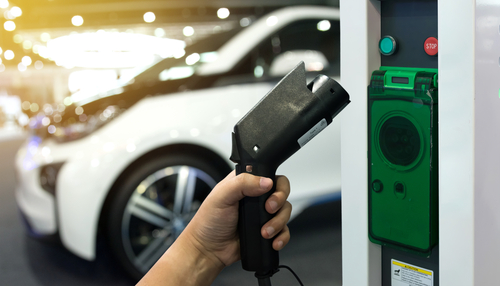PG&E launches three pilot programs to test how EVs can provide power to the grid

Pacific Gas and Electric Company (PG&E) received approval from the California Public Utilities Commission last week to develop three new pilot programs to test how bidirectional electric vehicles (EVs) and chargers can provide power to the electric grid.
Through these $11.7 million pilot programs, PG&E will test bidirectional charging technology in various settings, including in homes, businesses, and with local microgrids in select high fire-threat districts (HFTDs). Bidirectional charging technology allows EVs to take power from the grid or a customer’s solar system and send it back to the grid. The pilots will test the ability of an EV to send power back to the grid and provide power during an outage.
These pilot programs offer a financial incentive for participating customers and additional benefits for those in disadvantaged communities. PG&E expects customers will be able to enroll in the home and business pilots in late summer 2022 — and all three are expected to be available to customers in 2022 and 2023.
“As electric vehicle adoption continues to grow, bidirectional charging technology has huge potential for supporting our customers and the electric grid broadly. We’re excited to launch these new pilots, which will add to our existing work testing and demonstrating the possibility of this technology,” Jason Glickman, PG&E’s executive vice president, engineering, planning & strategy, said.
Through the $7.5 million pilot with residential customers, PG&E will work with automakers and EV charging suppliers to explore how light-duty passenger EVs at single-family homes can help customers and the electric grid. These include providing backup power to the home if the power is out, optimizing EV charging and discharging to help the grid integrate more renewable resources, and aligning EV charging and discharging with the real-time cost of energy procurement. It will be open to 1,000 residential customers, who will receive at least $2,500 for enrolling, and up to an additional $2,175 depending on their participation.
The $2.7 million pilot with business customers will explore how medium- and heavy-duty and possibly light-duty EVs at commercial facilities could help customers and the electric grid in the ways outlined above. This pilot will be open to approximately 200 business customers who will receive at least $2,500 for enrolling and up to an additional $3,625 depending on their participation.
The $1.5 million microgrid pilot will explore how EVs—both light-duty and medium- to heavy-duty—plugged into community microgrids can support community resiliency during Public Safety Power Shutoff events. Customers will be able to discharge their EVs to the community microgrid to support temporary power or charge from the microgrid if there is excess power. This pilot will be open to up to 200 customers with EVs located in HFTD locations that contain compatible microgrids used during Public Safety Power Shutoff events. Customers will receive at least $2,500 for enrolling and up to an additional $3,750 depending on their participation.
More information on these programs can be found on the California Public Utilities Commission’s website.
“The pilot programs authorized today are a continuation of the CPUC’s efforts to expand avenues to ensure grid reliability while also encouraging technologies that reduce greenhouse gas emissions and improve air quality,” CPUC President Alice Busching Reynolds said. “The programs advance the exploration of the integration of electric vehicles into the grid in a cost-effective manner to improve how and when customers use electricity in innovative ways.”
